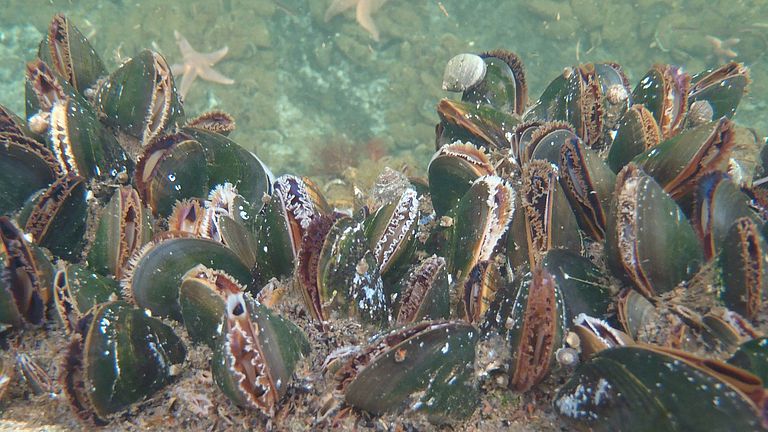Overfishing and destruction of the oceans: Only "Good Fish" belongs on the table
Research institutes, environmental associations and consumer organisations publish joint list for conscious fish purchasing
– joint press release by the German Consumer Organisations (Verbraucherzentralen), GEOMAR Helmholtz Centre for Ocean Research Kiel, Deutsche Umwelthilfe, Naturschutzbund Deutschland and World Wide Fund For Nature –
Research institutions, environmental associations and the consumer centers publish first joint list for conscious fish purchasing
- Good fish has become rare and the various fish guides give different recommendations depending on the criteria selected.
- Research institutions, environmental associations and the consumer centers have therefore compiled a list of fish whose catch and consumption currently indicate the best choice for all those who do not want to do without fish.
- Consumers, traders and restaurants should buy fish and shellfish that correspond exactly to the list in order to make a conscious choice.
The data of recent years are worrying: the majority of fish stocks worldwide are fished to their biological limits or beyond. Only a few stocks are still in good condition. Yet fish are important for the entire marine ecosystem:
"Even commercially exploited fish species must be able to fulfill their role as predator or prey in the ecosystem. To do this, fish stocks must be large enough and may only be fished sustainably. Through our research, we have ensured that this is true for the fish in this list," says Dr. Rainer Froese, marine ecologist and fisheries scientist at GEOMAR Helmholtz Centre for Ocean Research Kiel.
In order for fish to remain part of our diet, but also in the ecosystem, sustainable, stock-conserving fishing is extremely important, DUH also emphasizes.
"We must only take as much fish out of the oceans as can naturally grow back again. However, it is very difficult for consumers to know which fish are caught sustainably and which fisheries do not endanger the health of our seas and fish populations. The 'Good Fish' list can help consumers understand what is important when catching and buying fish," says Dr. Katja Hockun, marine conservation specialist at DUH.
Catch area and catch method must correspond exactly with the information in the list
For unprocessed fish and frozen products, the information on fish species, catch method and catch area is mandatory. These should be compared exactly with the list so that in the end no fish from a highly endangered stock ends up in the shopping cart.
In addition to the origin, the fishing method is therefore an important criterion, as different fishing methods have an impact on the stocks, as well as on the seabed and other animals in this ecosystem, depending on the method and gear.
"Good fish must also mean that fishing is nature-friendly, avoiding harmful environmental impacts. Part of the solution is alternative fishing gear that avoids unwanted bycatch. It is important to develop them quickly and bring them into practice," says Dr. Kim Detloff, NABU head of marine conservation.
Uniform information for purchasing
Various institutions have developed fish guides in the past, but they provide different ratings depending on the criteria selected. Therefore, one of the main advantages of this list is the uniform information:
"Many consumers like to eat fish, but they also know about the problems of overfishing. That's why we're pleased to have worked with the participating institutions to create a list that is a real shopping aid for sustainable fish purchases," says Dr. Britta Schautz, food and nutrition expert at Verbraucherzentrale Berlin.
"The 'Good Fish' list is valuable for all people who want to do something about the exploitation of the oceans. It is short and easy to understand – the rule of thumb for the supermarket, so to speak," says Dr. Philipp Kanstinger, WWF fisheries expert.
But it is not only for consumers that this list can be of help.
It should also be used in the annual negotiations on the allocation of fishing quotas, so that political decision-makers can obtain an up-to-date picture of stocks.
The "Good Fish" list is updated annually and includes not only the stock sizes of the listed fish species, but also takes into account ecological aspects. And it is these aspects that determine whether a fish is a "good fish".



